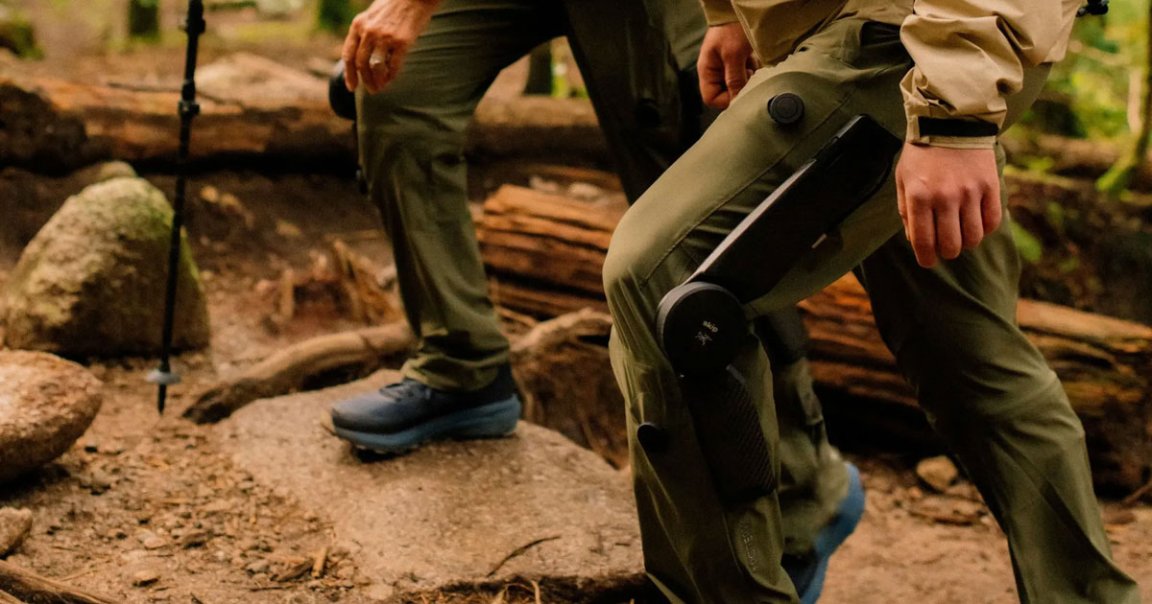
Strong Trousers
Outdoors outfitter Arc’teryx has partnered up with a tech startup called Skip to design a high-tech pair of hiking pants that have — we crap you not — a built-in powered exoskeleton.
Unsurprisingly, the added benefit of a wearable exoskeleton doesn’t come cheap. The company’s MO/GO trousers will cost you a whopping $5,000, unless you’re willing to be an early adopter, which could net you a $500 discount.
According to Skip, the pants are the “world’s first powered clothing,” and can “boost your legs by up to 40 percent on the way up” as well as support your knees on the way down. Overall, the trousers can also make you feel “up to 30 pounds lighter as you move.”
That’s despite the pants themselves weighing a whopping seven pounds total, with each of its two snap-on carbon fiber exoskeleton unit weighing in at two pounds.
But whether the concept of an ultra-expensive pair of motor-assisted hiking pants will ever take off remains to be seen. Even when worn as a brace outside of a conventional pair of pants, the tech hasn’t exactly broken into the mainstream.
Traveling Pants
To familiarize the public with its unorthodox trousers, Arc’teryx is hosting a number of $80 demos across its shops in North America.
While the system “recharges automatically during downhill walking,” the MO/GO pants’ battery only lasts for roughly three hours. Owners can, however, swap out the battery on the go for longer ranges.
On its website, Skip also claims that the system “trained on the biggest mountains in the world to handle any terrain you encounter in-stride” and that it “adapts in real-time to any change in activity and walking style you throw its way.”
Apart from boosting a hiker’s endurance, exoskeletons are also enabling paralyzed people to walk again.
During last week’s Olympics opening ceremony, para-athlete Kevin Piette, who has been a paraplegic for 11 years, could be seen walking with the aid of a robotic exoskeleton while carrying the Olympic Torch.
But Arc’teryx and Skip are intentionally looking for something far less involved.
“For me the differentiating factor is taking it out of the realm of exoskeletons, which look and feel like an Iron Man suit and cost tens of thousands [dollars], and to make it approachable for an everyday person,” Skip lead designer Anna Roumiantseva told Fast Company.
More on exoskeletons: Paralyzed Tennis Player Carries Olympic Torch Using Robotic Exoskeleton